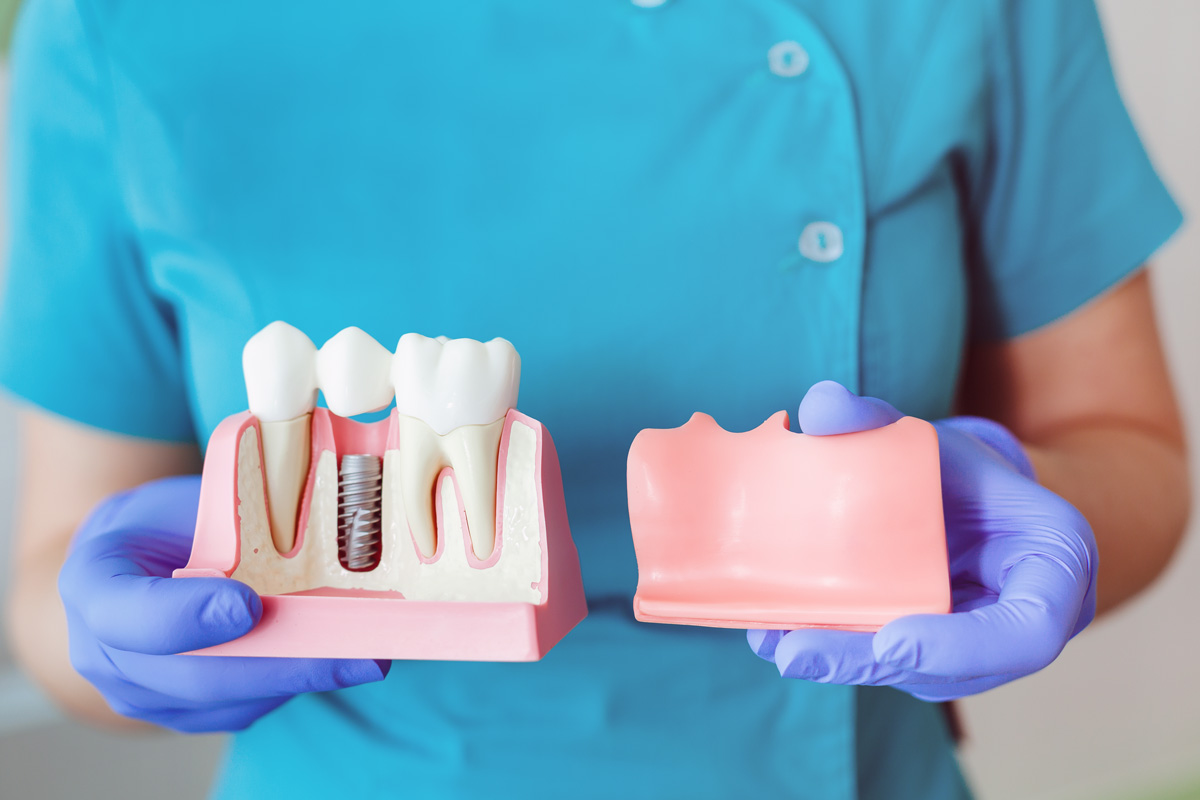Dental Implants: Everything You Need to Know!

People who have lost teeth often are too self-conscious to smile or talk confidently. They can develop poor eating habits when food is difficult to chew which often leads to secondary health problems. Dental implants provide individuals with a complete restoration option for missing teeth. They are a great investment for any dental practice. Implants have greater than a 90% success rate and can greatly improve the quality of your life.
Dental implants aren’t just dentures, they should provide a complete tooth replacemente acting as artificial roots to support full function and to stop or prevent jawbone loss.
By replacing missing tooth roots, these types of dental implants provide people with the strength and stability required to eat all the foods they love, without struggling to chew. Additionally, these types help stimulate and maintain jawbone, preventing bone loss and helping to support facial features.
Return to smile, with a great dental implant!
Types of Dental Implants.
Endosteal (Endosseous) Implants:
Endosteal is the most commonly used type of dental implant. They are sometimes used as an alternative to a bridge or removable denture. Endosteal implants include screw types (threaded), cylinder types (smooth) or bladed types. Your prosthodontist can help determine which type of dental implant will work best for you, but endosteal implants are safe, effective and the most popular choice used today.
The normal endosteal implant suits most people with sufficient amount of healthy bone mass that allows the screw to be placed at a sufficient depth.
Where bone is inadequate your dentist may recommend bone augmentation before the implant procedure. The sinus lift is another procedure used for upper tooth implant. The area below the sinus receives additional bone material. If the jaw is not wide enough for the implant then a ridge expansion procedure may be carried out before the implant procedure.
Subperiosteal Implants:
Subperiosteal are rarely used today. They were once primarily used to hold dentures in place in patients with insufficient bone height. When subperiosteal implants are used, they are placed on the jawbone within the gum tissue, with the metal implant post exposed through the gums to hold the denture.
Pricing
Dental experts can clearly offer and explain the entire cost of their dental implants. If you are looking for budget-friendly options, they should also be capable of offering you financing options that will suit your budget. You can also ask questions about prosthetic and tooth replacement options like bridges, full dentures, and partials. Or you can ask for a loan at your bank, showing them the estimante price.
Which type of implant is the best for you?
It is not up to you to take the decision of choosing an endosteal or subperiosteal implant. Your dentist is likely to X-ray the area to know which type of implant will suit you best. If bone augmentation, ridge expansion or sinus lift is deemed necessary it means extra costs for you. In such cases, you may make do with a crown-bridge combination. Trust your dentist to make the right choice of dental implant for you, you won't regret it and you'll keep smiling!